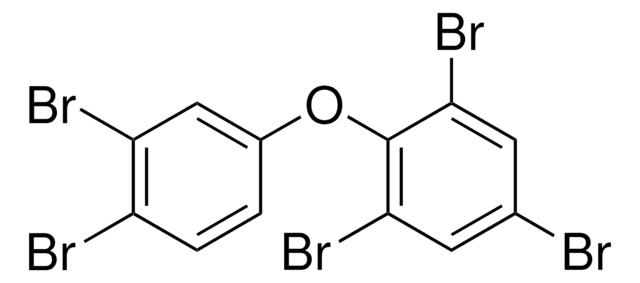795585
Silicon
nanopowder, <100 nm (BET), <3% oxygen passivation
Synonym(s):
Tekmat™ Si-N100
About This Item
Recommended Products
form
nanopowder
solid
particle size
<100 nm (BET)
bp
2355 °C (lit.)
mp
1410 °C (lit.)
density
2.33 g/mL at 25 °C (lit.)
SMILES string
[Si]
InChI
1S/Si
InChI key
XUIMIQQOPSSXEZ-UHFFFAOYSA-N
Looking for similar products? Visit Product Comparison Guide
Application
- New Chemical Synthesis Strategy To Construct a Silicon/Carbon Nanotubes/Carbon-Integrated Composite with Outstanding Lithium Storage Capability.: This research presents a novel synthesis method to create a composite material integrating silicon, carbon nanotubes, and carbon. This composite demonstrates exceptional lithium storage capacity, making it a promising material for high-performance lithium-ion batteries (Yan et al., 2023).
- Surface Oxidation of Nano-Silicon as a Method for Cycle Life Enhancement of Li-ion Active Materials.: The study investigates surface oxidation techniques on nano-silicon to enhance the cycle life of lithium-ion battery materials. This approach addresses the common issue of silicon degradation, significantly improving battery longevity (Ratynski et al., 2020).
- Carboxymethyl fenugreek gum: Rheological characterization and as a novel binder for silicon anode of lithium-ion batteries.: This paper explores the use of carboxymethyl fenugreek gum as a binder for silicon anodes in lithium-ion batteries. The novel binder improves the mechanical stability and performance of the silicon anodes, offering a sustainable alternative to traditional materials (Qiu et al., 2018).
- Anatase TiO(2) as a Cheap and Sustainable Buffering Filler for Silicon Nanoparticles in Lithium-Ion Battery Anodes.: This research highlights the use of anatase TiO2 as a cost-effective and sustainable filler for silicon nanoparticles in battery anodes. The material enhances the structural integrity and performance of the anodes, contributing to more efficient energy storage solutions (Maroni et al., 2017).
- High Areal Capacity Si/LiCoO(2) Batteries from Electrospun Composite Fiber Mats.: This study introduces electrospun composite fiber mats incorporating silicon and LiCoO2, achieving high areal capacity batteries. The composite mats improve the overall energy density and stability of lithium-ion batteries, marking a significant advancement in battery technology (Self et al., 2017).
Legal Information
signalword
Warning
hcodes
Hazard Classifications
Flam. Sol. 2
Storage Class
4.1B - Flammable solid hazardous materials
wgk_germany
WGK 3
flash_point_f
Not applicable
flash_point_c
Not applicable
Certificates of Analysis (COA)
Search for Certificates of Analysis (COA) by entering the products Lot/Batch Number. Lot and Batch Numbers can be found on a product’s label following the words ‘Lot’ or ‘Batch’.
Already Own This Product?
Find documentation for the products that you have recently purchased in the Document Library.
Customers Also Viewed
Articles
Recent demand for electric and hybrid vehicles, coupled with a reduction in prices, has caused lithium-ion batteries (LIBs) to become an increasingly popular form of rechargeable battery technology.
TiO2 exhibits wide band gap semiconductor and memristor properties electronically, with high opacity and UV absorbance optically.
Catalytic water splitting produces hydrogen crucial for renewable energy, petroleum refining, and chemical industry applications like methanol production.
Controlled synthesis of metal clusters regulates ligands and atoms, advancing metal nanomaterial synthesis.
Our team of scientists has experience in all areas of research including Life Science, Material Science, Chemical Synthesis, Chromatography, Analytical and many others.
Contact Technical Service







